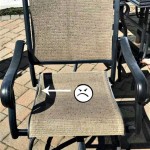How To Build A Pea Gravel Patio On Sloped Ground
Constructing a pea gravel patio on sloped ground presents unique challenges compared to a flat surface. The primary concern is preventing gravel migration due to gravity and water runoff. A properly engineered and installed patio on a slope will effectively manage water drainage, maintain its form, and provide a stable and aesthetically pleasing outdoor space. This article details the process of building such a patio, emphasizing crucial considerations for dealing with sloped terrain.
Before commencing the project, a thorough assessment of the slope is paramount. The degree of the slope will dictate the complexity of the necessary retaining structures and the overall excavation requirements. Furthermore, local building codes and regulations regarding drainage and retaining walls must be investigated. Failure to adhere to these regulations can result in costly rework and potential legal issues.
Planning and Design Considerations
The initial step involves accurately surveying the area and creating a detailed plan. This plan should incorporate the dimensions of the patio, the slope's grade, and the proposed drainage solutions. Consider the intended use of the patio to determine its size and shape. A larger patio may require more extensive retaining walls and drainage systems. The design should also take into account the existing landscape and integrate the patio seamlessly into the surrounding environment.
Drainage is a critical factor when building on a slope. Water runoff can erode the gravel base and destabilize the patio. Effective drainage solutions include the installation of French drains behind retaining walls, the creation of swales to redirect water flow, and the incorporation of permeable edging materials. The chosen drainage method should be appropriate for the volume of water anticipated in the area.
Retaining walls are often necessary to create level tiers on sloped ground. These walls provide structural support and prevent gravel from sliding downhill. The type of retaining wall chosen will depend on the height of the slope and the desired aesthetic. Options include concrete blocks, timber, natural stone, and segmental retaining wall blocks. Regardless of the material, the retaining wall must be properly engineered to withstand the pressure of the soil and gravel behind it.
The choice of pea gravel is another important consideration. Pea gravel comes in various sizes and colors. For a patio, a size ranging from 1/4 inch to 3/8 inch is generally recommended, as it provides a good balance between stability and comfort underfoot. The color of the gravel should complement the surrounding landscape and the materials used in the retaining walls.
Finally, consider the integration of lighting and other features, such as fire pits or built-in seating. These elements can enhance the functionality and aesthetic appeal of the patio. Ensure that any electrical or gas lines are properly installed and comply with local codes.
Excavation and Base Preparation
Once the plan is finalized, the next step is to excavate the area. This involves removing the topsoil and any vegetation. The depth of the excavation will depend on the planned thickness of the gravel base and the height of any retaining walls. It's generally recommended to excavate to a depth of at least 6-8 inches below the finished patio surface.
When working on a slope, excavation is often done in tiers, creating level platforms for each section of the patio. This approach simplifies the construction of retaining walls and ensures a stable base. Use a level and measuring tape to accurately establish the grade of each tier.
After the excavation is complete, the base must be compacted. This is crucial for preventing settling and ensuring a stable surface. Use a plate compactor to thoroughly compact the soil. Pay particular attention to the areas around the retaining walls, as these are prone to erosion.
A layer of landscape fabric should be installed over the compacted base. This fabric prevents weeds from growing up through the gravel and also helps to separate the gravel from the underlying soil, preventing mixing and maintaining the integrity of the base. Overlap the edges of the fabric by at least 12 inches to ensure complete coverage.
Following the landscape fabric, a layer of crushed stone should be added. This layer provides a stable and well-draining base for the pea gravel. The crushed stone should be at least 4 inches thick and compacted using a plate compactor. This layer will help to distribute weight evenly and prevent the pea gravel from sinking into the soil.
Retaining Wall Construction and Installation
The construction of retaining walls is a critical aspect of building a pea gravel patio on a slope. The retaining walls must be strong enough to withstand the pressure of the soil and gravel behind them. The type of retaining wall chosen will depend on the height of the slope and the desired aesthetic.
For smaller slopes, timber retaining walls can be a cost-effective option. Pressure-treated lumber is recommended for its durability and resistance to rot. The timbers should be buried at least one-third of their height to provide stability. Backfill behind the timbers with gravel to promote drainage.
For larger slopes, concrete block or segmental retaining wall blocks are a more robust option. These walls are typically built on a concrete footing that extends below the frost line. The blocks are interlocked and backfilled with gravel to provide drainage. Consult with a structural engineer to ensure that the wall is properly designed and constructed.
Regardless of the material used, it is essential to ensure that the retaining wall is level and plumb. Use a level and measuring tape to accurately align the wall. Backfill behind the wall in layers, compacting each layer as it is added. This will help to prevent the wall from shifting or collapsing.
Consider incorporating drainage features into the retaining wall, such as weep holes or French drains. Weep holes allow water to escape from behind the wall, reducing the pressure and preventing water buildup. French drains are perforated pipes that are buried behind the wall and connected to a drainage outlet. These drains collect water and divert it away from the patio.
Once the retaining walls are constructed, ensure that they are properly sealed or treated to protect them from the elements. This will prolong their lifespan and maintain their structural integrity.
Pea Gravel Installation and Finishing Touches
With the base prepared and the retaining walls in place, the final step is to install the pea gravel. The gravel should be spread evenly over the prepared base, to a depth of 2-4 inches. Use a rake to distribute the gravel and create a smooth, level surface.
Consider using edging materials to contain the pea gravel and prevent it from spilling onto the surrounding lawn or garden. Options include plastic edging, metal edging, or natural stone edging. The chosen edging material should be durable and aesthetically pleasing.
Once the gravel is installed, lightly water it to help it settle and compact. This will also help to remove any dust or debris. Periodically rake the gravel to maintain a smooth and even surface. Add more gravel as needed to maintain the desired depth.
Integrate plants, decorative stones, or other features to enhance the aesthetic appeal of the patio. Potted plants can add color and texture, while decorative stones can create visual interest. Ensure that any features are placed strategically to complement the overall design.
Finally, inspect the patio for any potential problems, such as drainage issues or unstable retaining walls. Address any issues promptly to prevent further damage. Regular maintenance, such as raking and weeding, will help to keep the patio in good condition for years to come.

How To Make A Pea Gravel Patio At Home In The Wildwood

How To Make A Pea Gravel Patio At Home In The Wildwood

How To Make A Pea Gravel Patio At Home In The Wildwood

Hillside Gravel And Timber Path Done Digging

How To Make A Pea Gravel Patio At Home In The Wildwood

How To Buil A Pea Gravel Patio

Diy Pea Gravel Patio

Diy Pea Gravel Patio With Pavers Love Renovations

Diy Pea Gravel Patio With Pavers Love Renovations

Diy Pea Gravel Patio With Pavers Love Renovations
See Also








